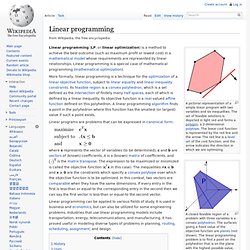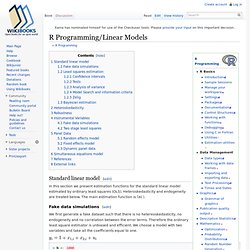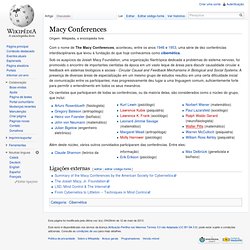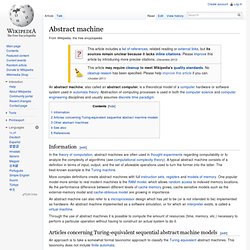

Auomated planning. Ontologies. Computational social science: Making the links. Jon Kleinberg's early work was not for the mathematically faint of heart.

His first publication1, in 1992, was a computer-science paper with contents as dense as its title: 'On dynamic Voronoi diagrams and the minimum Hausdorff distance for point sets under Euclidean motion in the plane'. That was before the World-Wide Web exploded across the planet, driven by millions of individual users making independent decisions about who and what to link to. And it was before Kleinberg began to study the vast array of digital by-products generated by life in the modern world, from e-mails, mobile phone calls and credit-card purchases to Internet searches and social networks.
Today, as a computer scientist at Cornell University in Ithaca, New York, Kleinberg uses these data to write papers such as 'How bad is forming your own opinion? '
Hyperbolic growth. Organizing Computational Data Projects. System Dynamics. Cliodynamics. Systems and Social Theory. Patterns and Complexity. Computational Social Science text books. What is Chaos? An Interactive Online Course for Everyone. Natural language processing. Downward Causation. Evolution. Game Theory. File:Complex systems organizational map.jpg. Hooke Law. L-systems. Emergence. Self organization and emergence properties. Crowd inetilligence. Creative Learning Exchange — Computational Linguistics. Agent based. Complex systems. ComplexSystems. Sociology and Complexity Science. Computer Simulations for Research Design. Simulation. Linear programming. A pictorial representation of a simple linear program with two variables and six inequalities.

The set of feasible solutions is depicted in light red and forms a polygon, a 2-dimensional polytope. The linear cost function is represented by the red line and the arrow: The red line is a level set of the cost function, and the arrow indicates the direction in which we are optimizing. Linear programming (LP, or linear optimization) is a method to achieve the best outcome (such as maximum profit or lowest cost) in a mathematical model whose requirements are represented by linear relationships.
Linear programming is a special case of mathematical programming (mathematical optimization). Linear programs are problems that can be expressed in canonical form: is the matrix transpose. History[edit] The problem of solving a system of linear inequalities dates back at least as far as Fourier, after whom the method of Fourier–Motzkin elimination is named. Uses[edit] Standard form[edit] e.g. R Programming/Linear Models - Wikibooks, collection of open-content textbooks.
Standard linear model[edit] In this section we present estimation functions for the standard linear model estimated by ordinary least squares (OLS).

Heteroskedasticity and endogeneity are treated below. The main estimation function is lm(). DataminingTools - Watch.Learn.Mine. DynamicalSystems.
Social Network Analysis. Cognitive science. Cybernetics. Cybernetics is a transdisciplinary[1] approach for exploring regulatory systems, their structures, constraints, and possibilities.

Cybernetics is relevant to the study of systems, such as mechanical, physical, biological, cognitive, and social systems. Cybernetics is applicable when a system being analyzed incorporates a closed signaling loop; that is, where action by the system generates some change in its environment and that change is reflected in that system in some manner (feedback) that triggers a system change, originally referred to as a "circular causal" relationship.
Some say this is necessary to a cybernetic perspective. System dynamics, a related field, originated with applications of electrical engineering control theory to other kinds of simulation models (especially business systems) by Jay Forrester at MIT in the 1950s. Norbert Wiener defined cybernetics in 1948 as "the scientific study of control and communication in the animal and the machine Definitions[edit] W. General. Cibernética. Origem: Wikipédia, a enciclopédia livre.

Macy conferences. Origem: Wikipédia, a enciclopédia livre.

Com o nome de The Macy Conferences, aconteceu, entre os anos 1946 e 1953, uma série de dez conferências interdisciplinares que levou à fundação do que hoje conhecemos como cibernética. Sob os auspícios da Josiah Macy Foundation, uma organização filantrópica dedicada a problemas do sistema nervoso, foi promovido o encontro de importantes cientistas da época em um vasto leque de áreas para discutir causalidade circular e feedback em sistemas biológicos e sociais - Circular Causal and Feedback Mechanisms in Biological and Social Systems.
Abstract machine. An abstract machine, also called an abstract computer, is a theoretical model of a computer hardware or software system used in automata theory.

Abstraction of computing processes is used in both the computer science and computer engineering disciplines and usually assumes discrete time paradigm. Information[edit] In the theory of computation, abstract machines are often used in thought experiments regarding computability or to analyze the complexity of algorithms (see computational complexity theory). A typical abstract machine consists of a definition in terms of input, output, and the set of allowable operations used to turn the former into the latter. The best-known example is the Turing machine. More complex definitions create abstract machines with full instruction sets, registers and models of memory.
Autômato. Origem: Wikipédia, a enciclopédia livre.

Um autômato (português brasileiro) ou autómato (português europeu) é uma máquina ou robô que se opera de maneira automática.1 Etimologia[editar | editar código-fonte] A palavra "autômato" é uma latinização da palavra grega αὐτόματον, autômato, significando "agindo pela vontade própria". É mais comumente descrito como máquinas que se movem sem a ajuda de eletricidade, especialmente aquelas que realizam ações que lembram humanos ou animais, como é o caso do cuco de um relógio de parede.